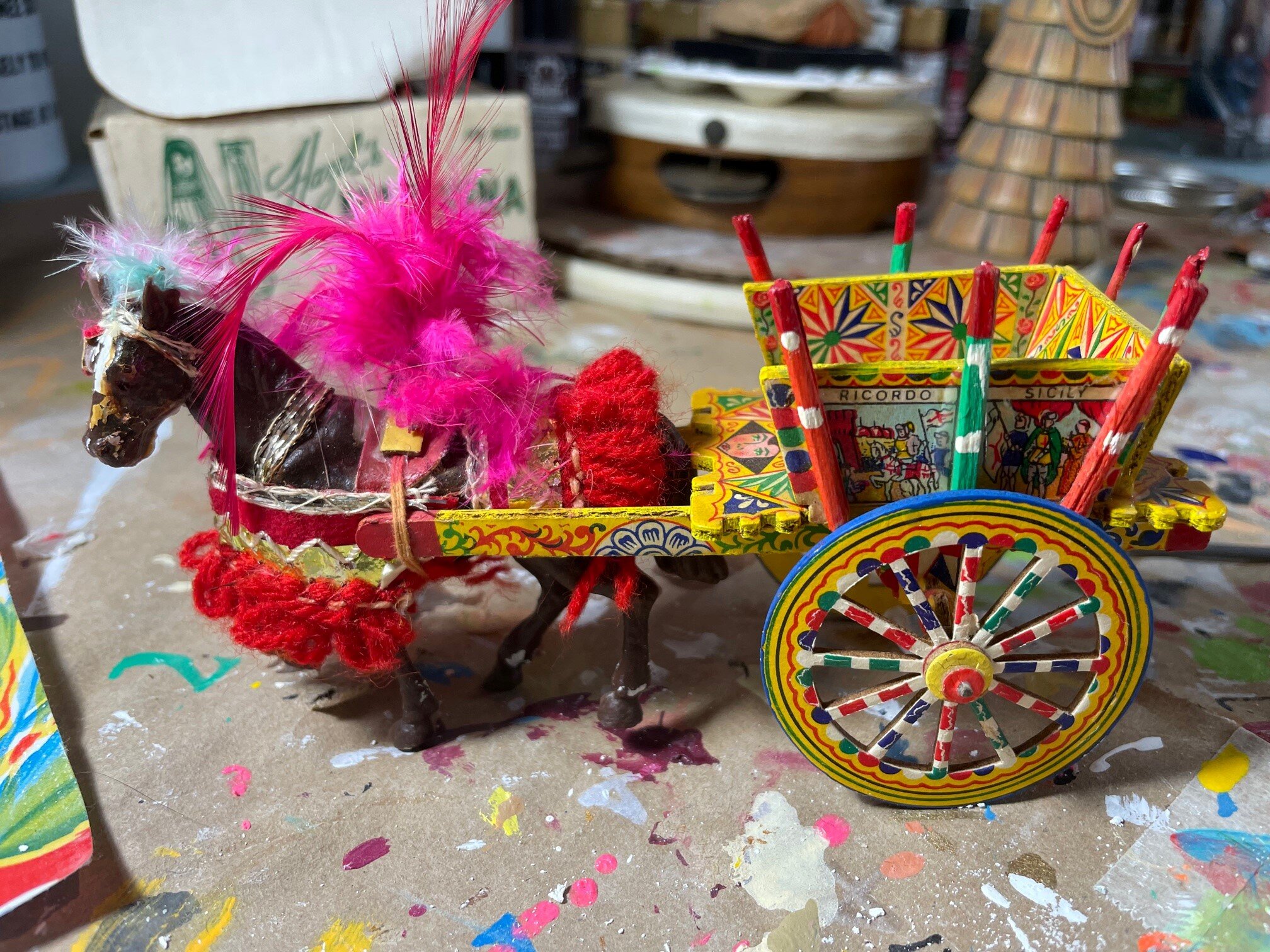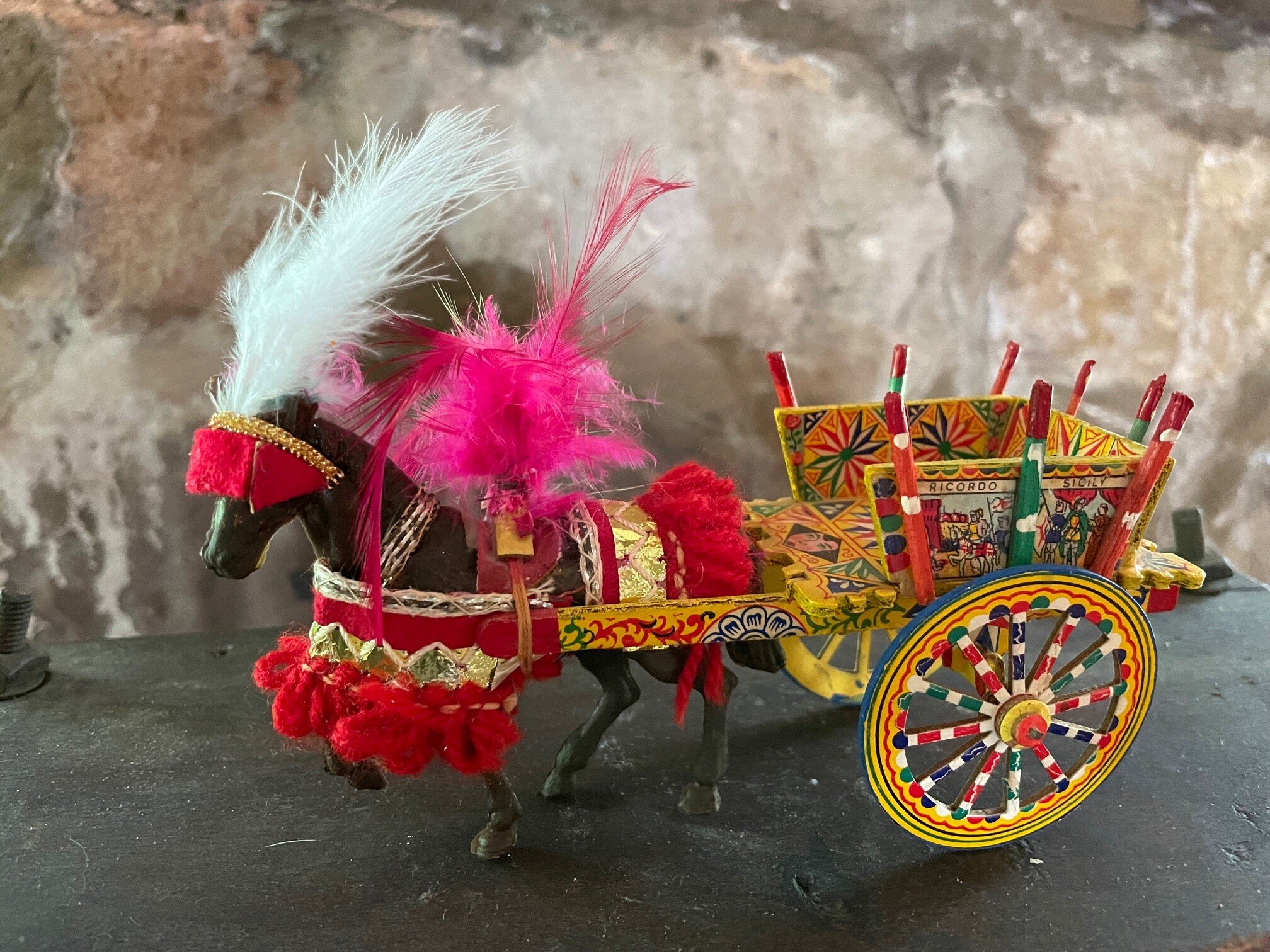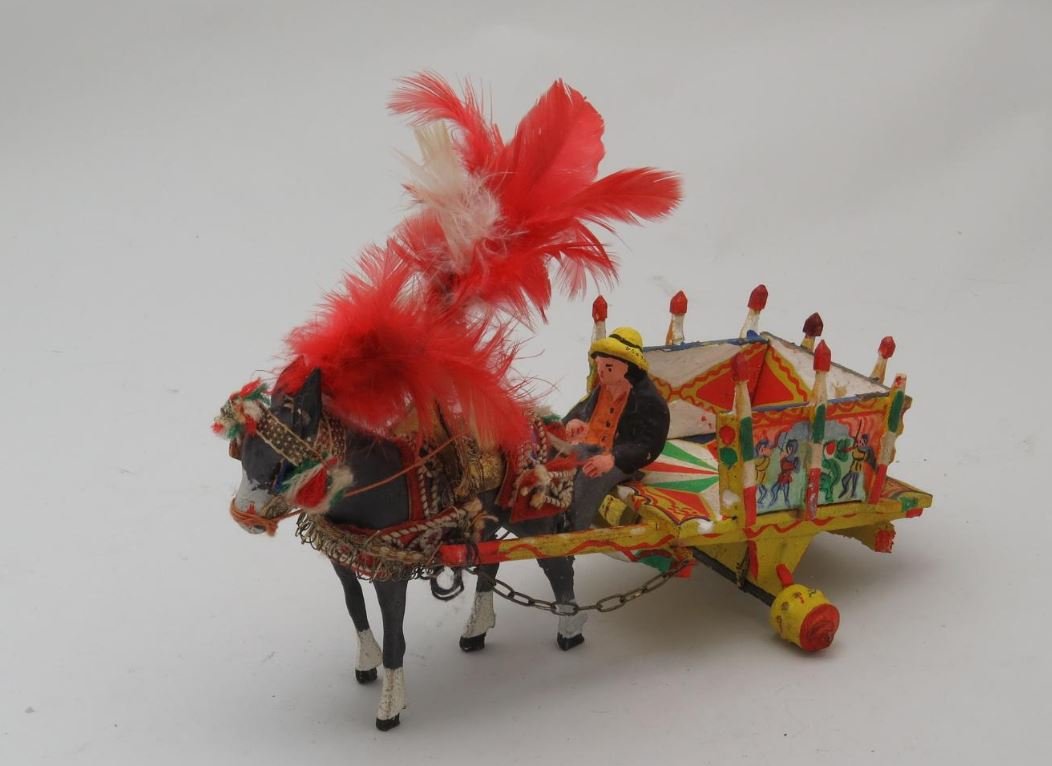The Sicilian Cart: A Masterpiece of Folk Art
Imagine a two‑wheeled wonder that’s part practical transporter, part rolling storybook—and decked in such exuberant hues and carvings that even the wheels seem to whisper tales. That’s the Sicilian cart: the Sicilian Cart, or Carretto Siciliano, a vibrant testament to the rich cultural heritage of Siciliy. These brightly painted two-wheeled carts, traditionally drawn by donkeys in the countryside and horses in the cities, are more than just a means of transport; they are a canvas for the island’s history, folklore and artistry.
A Collective Craft
The creation of a Sicilian cart is a communal effort, involving the skilled hands of woodcarvers, blacksmiths, assemblers and painters. Each artisan contributes to the cart’s unique charm, transforming it into a moving work of art.
For the dear readers who want to understand the origins and history of the Sicilian Cart, The House directs you to a thorough summary prepared by Dolce & Gabbana, whose clothing frequently features the carts’ ornate iconography.
Old postcard depicting a traditional painted cart
The intricate carvings and vivid paintings often depict historical, literary, or religious scenes, serving both decorative and protective purposes. As Dolce & Gabbana aptly describe, these paintings not only preserve the wood but also imbue the cart with auspicious and protective powers.
Cultural Significance
Historically, these carts were essential for transporting goods and people across Sicily’s rugged terrain. However, their role extended beyond practicality. The painted scenes on the carts were believed to ward off bad luck and negative events, making them symbols of good fortune and happiness. Miniature replicas, known as carretini siciliani, became popular souvenirs, spreading the charm of the Sicilian cart far beyond the island, and occult catalogs in the 1970s and 1980s sold them as “couriers of good luck and happiness.”
Yours truly found this beat-up souvenir cart at a flea market and bought it for $1.
After a little time in the studio, it was looking a lot better.
Modern-Day Legacy
Today, the tradition of the Sicilian cart is kept alive by dedicated artisans who continue to paint these vibrant historical scenes. While the carts are now primarily used in weddings and folk festivals, the tradition of painting these vibrant historical scenes on carts is being kept alive by artisans in Sicily. And their legacy endures in museums and private collections worldwide.
There is a museum dedicated to the Sicilian Cart in Palermo. But one need not travel all the way to Sicily to see an honest-to-goodness Carretto Siciliano. Notably., there is one in the permanent collection of the Museo Italo Americano in San Francisco, California, and the Museum of International Folk Art in Santa Fe houses an exquisite example of these carts, allowing a global audience to appreciate their beauty and cultural significance.
Carretto Siciliano by Tano Ferrara c. 1920, Gift of Mrs. Lee Polizzi in memory of Manfredi Polizzi
Panel from an old Sicilian Cart; House of Good Fortune Collection
The Italian American Museum of Los Angeles also hosted an exhibition of The Sicilian Cart from June 30, 2017 - January 7, 2018, and the images are still available online, including a magnificent SMEG refrigerator done in collaboration with Dolce & Gabbana.
Partanna olive oil features a Sicilian cart on its label.
“Donkey Serenade” sheet music for the piano, featuring a couple riding in a Sicilian cart; House of Good Fortune Collection
Close-up of Partanna Olive Oil
Souvenir Handkerchief "Ricordo della Sicilia" with trinacria below; House of Good Fortune Collection
Though modern motorization has rendered these carts nearly obsolete, they endure as spirited ambassadors of Sicilian tradition. Today, they roll on in folk festivals and reside in museums, preserving their cultural magic for generations to come. The Sicilian cart stands as a symbol of Sicily’s enduring spirit, a colorful reminder of the island’s past and a beacon of its artistic and cultural heritage.















